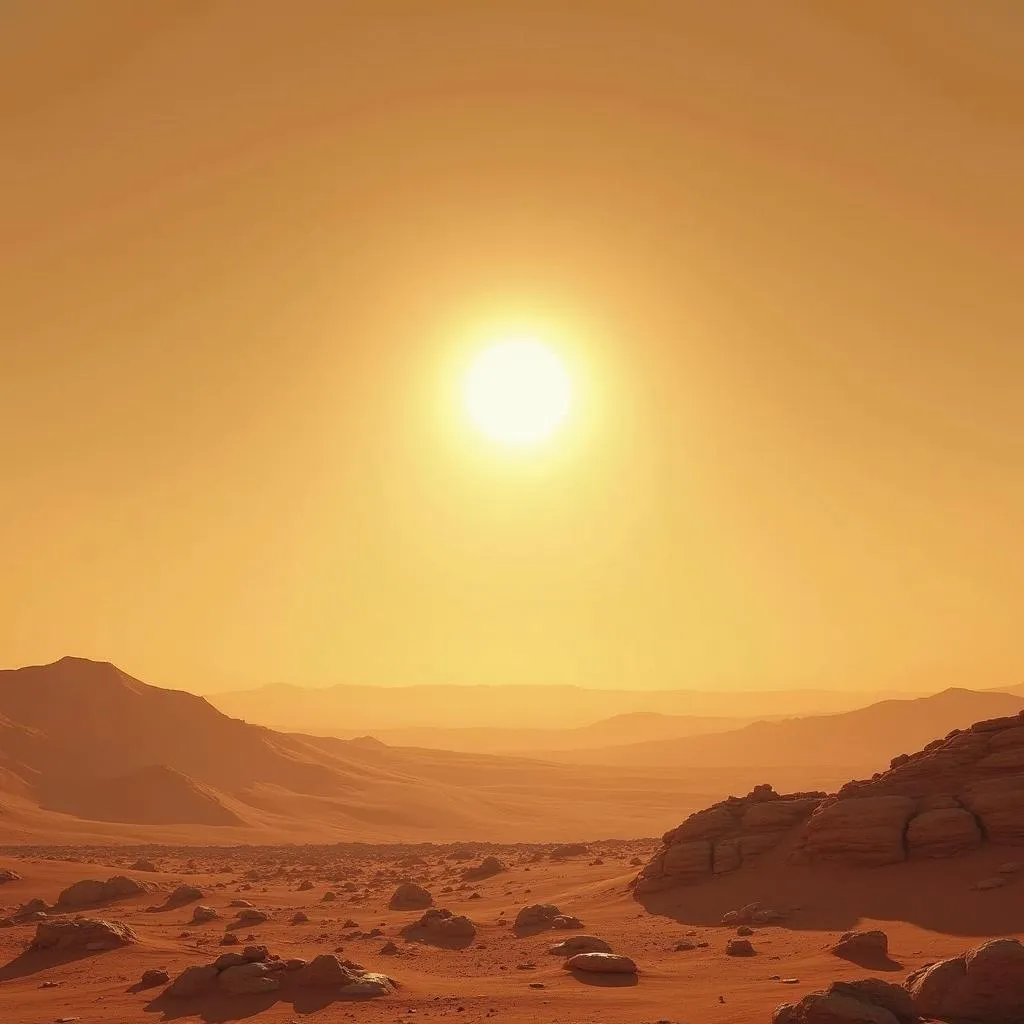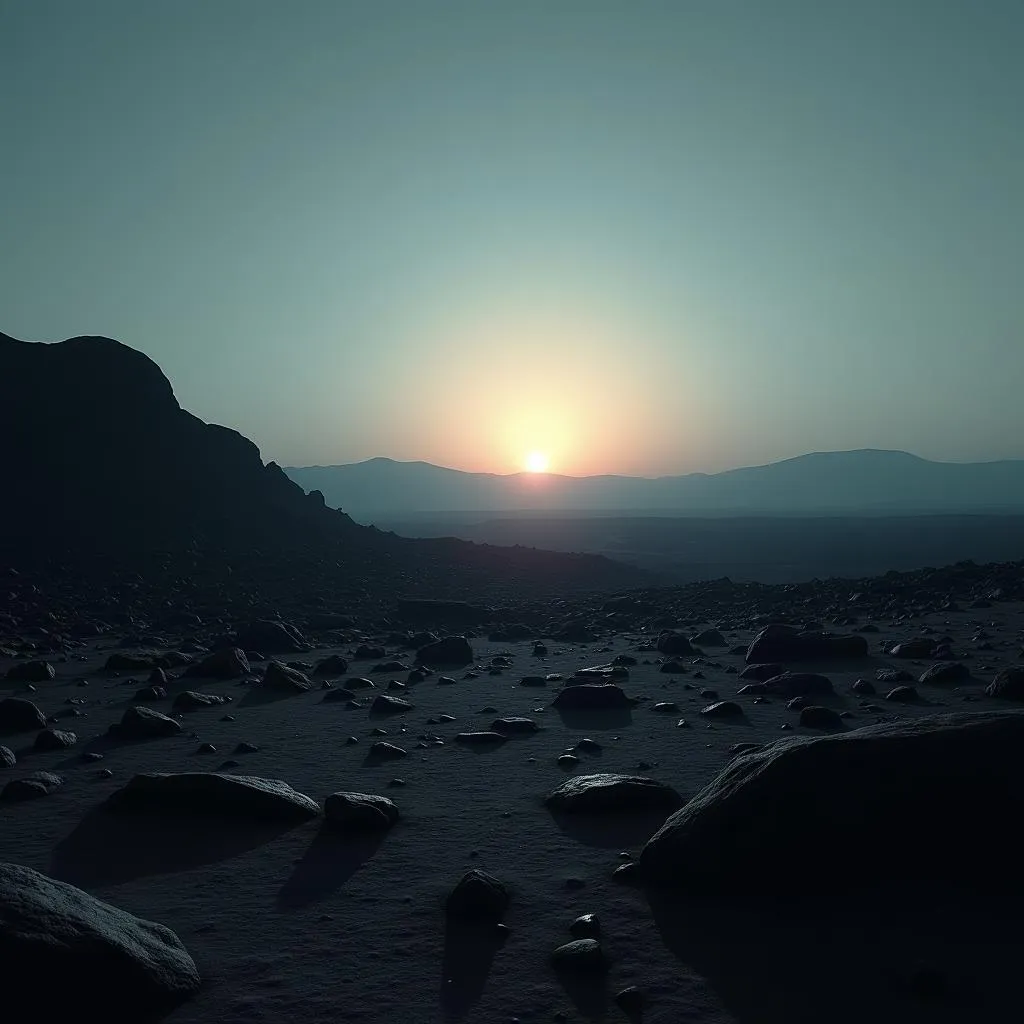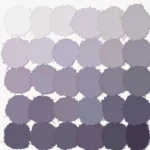The color of the sky on Mars is a fascinating topic that sparks curiosity about our celestial neighbor. While we often picture a rusty red planet, the Martian sky offers a surprising palette depending on the time of day and atmospheric conditions.
Unveiling the Hues: What Color is the Martian Sky?
Contrary to common assumptions, the Martian sky isn’t always red. During the day, it appears a pale butterscotch yellow-brown. This unique hue results from the fine dust particles suspended in the thin Martian atmosphere, scattering sunlight to create a warm, diffused light.
 Daytime sky on Mars
Daytime sky on Mars
A Change of Scenery: Sunset and Twilight on Mars
As the sun dips below the Martian horizon, the sky transforms into a mesmerizing spectacle. Unlike Earth’s vibrant sunsets, Martian sunsets paint the sky in cool, blue-gray tones. This phenomenon occurs because dust particles scatter longer wavelengths of light (reds and yellows) more effectively, leaving shorter wavelengths (blues and greens) to dominate the sky during sunset and twilight.
 Sunset on Mars
Sunset on Mars
The Science Behind the Colors: Understanding the Martian Atmosphere
The key to understanding the Martian sky’s color lies in its thin atmosphere, composed mainly of carbon dioxide with suspended dust particles. These particles, rich in iron oxide (rust), absorb blue and green light, scattering longer wavelengths like yellows and reds, which is why we see these colors during the day. However, during sunset and twilight, the sunlight travels through a longer path in the atmosphere, scattering away most of the warmer colors and allowing the blues and grays to prevail.
More Than Just Red: Exploring the Colorful Variations
While the butterscotch and blue-gray tones dominate, the Martian sky can exhibit other subtle hues. For instance, the presence of water ice clouds can introduce a faint pink or purple tinge. Additionally, dust storms, a common occurrence on Mars, can dramatically alter the sky’s appearance, making it appear a much deeper red or even brown.
Looking Beyond Earth: The Significance of Martian Sky Color
Studying the color of the Martian sky offers valuable insights into the planet’s atmospheric composition and dynamics. By analyzing the scattering and absorption of light, scientists can gather information about the size and distribution of dust particles, the presence of water ice, and the overall atmospheric pressure. This knowledge is crucial for understanding Mars’s past climate, potential habitability, and future exploration.
Conclusion: A Sky Full of Secrets
The color of the sky on Mars, a captivating blend of butterscotch, blue-gray, and occasional hints of other hues, reveals a dynamic and intriguing atmosphere. This unique celestial canvas provides valuable data for scientists and fuels our imagination as we continue to explore the mysteries of the Red Planet. Remember, the next time you gaze at a clear night sky, spare a thought for the captivating colors that grace the Martian sky.
FAQ
1. Why is the Martian sky yellow-brown during the day?
The daytime sky on Mars appears yellow-brown due to the presence of fine dust particles in its thin atmosphere. These particles scatter sunlight, with longer wavelengths (yellows and reds) scattering more effectively, giving the sky its characteristic hue.
2. What makes the Martian sunset blue?
During sunset, sunlight travels a longer path through the Martian atmosphere. This extended path allows dust particles to scatter away most of the warmer colors (reds and yellows), leaving the cooler colors (blues and grays) to dominate the sky.
3. Can the Martian sky be any other color besides yellow-brown and blue-gray?
Yes, while less common, the Martian sky can exhibit other subtle colors. For example, water ice clouds can introduce a faint pink or purple tinge. Additionally, dust storms can dramatically alter the sky’s appearance, making it appear a much deeper red or even brown.
4. What can we learn from studying the color of the Martian sky?
The color of the Martian sky provides valuable information about its atmospheric composition, including the size and distribution of dust particles, the presence of water ice, and overall atmospheric pressure. This data helps scientists understand Mars’s past climate, potential for life, and future exploration possibilities.
5. Is the Martian sky always the same color?
No, the Martian sky’s color can vary depending on factors such as the time of day, the presence of dust storms, and the formation of water ice clouds.
Need Help? Contact Us!
For any assistance or further inquiries, please don’t hesitate to reach out to our dedicated team.
Phone: 0373298888
Email: [email protected]
Address: 86 Cầu Giấy, Hà Nội
We are available 24/7 to assist you.

